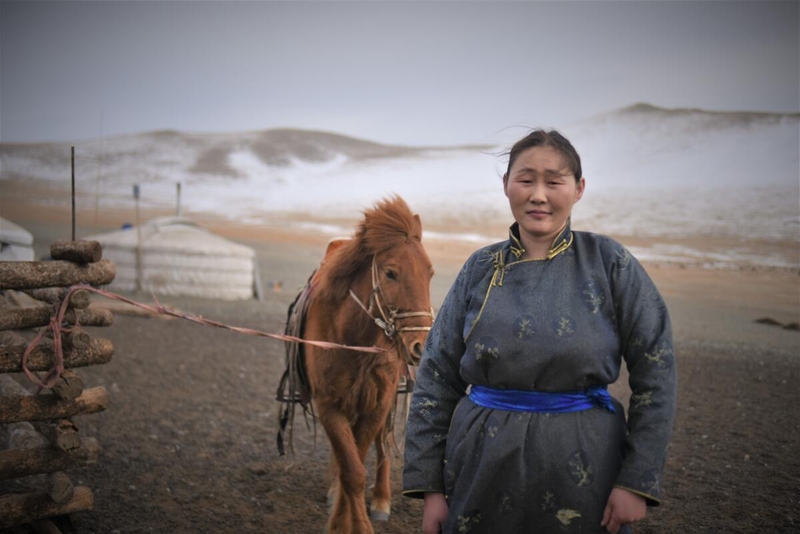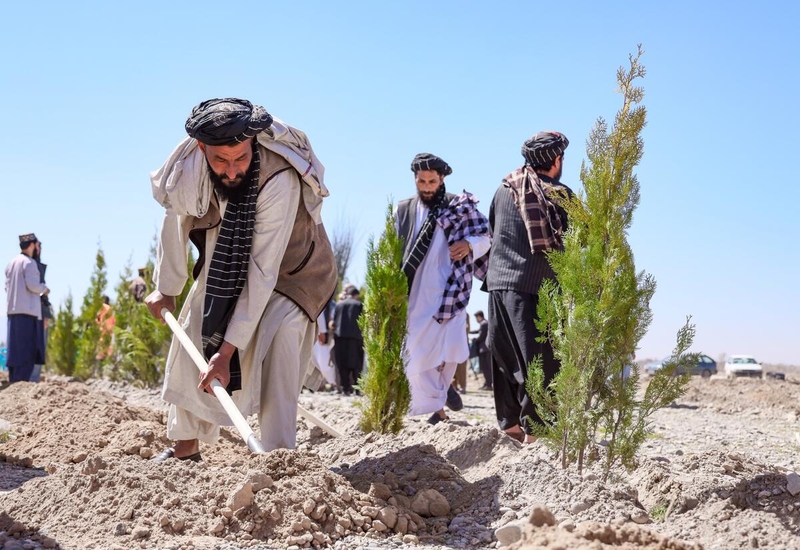Login Toast Message
Login toast message for the successfully login user
- Toast Message
-
Welcome Back, {{username}}👋
Logging you in....
Let's make a difference today.
What is a sandstorm? Hollywood offers some ideas. But as we munch popcorn and marvel at special effects, 330 million of the world's people are exposed to real-life dust and sandstorms every day. Health authorities worldwide are deeply concerned.
Some 2 billion tons of sand and dust soars into the atmosphere annually, travels with the wind and pollutes the air people breathe. People living in desert regions are often hit the hardest. Climate change is pushing those numbers up, as desertification spreads.
Sadly, the people most exposed to sandstorms are often the ones with the fewest resources to stay safe. Sturdy shelters, healthcare and safety masks are beyond reach for millions. In deserts, babies and children face the greatest peril of all.
But it doesn’t stop there. In June 2025, a sand cloud from the Sahara Desert travelled more than 10,000 kilometres across the Atlantic Ocean to torment families in the Caribbean and the south-eastern United States. Asthma and allergy patients faced particular risks.
So concerning are the potential health and environmental effects that the United Nations recently declared 2025-2024 as the “Decade of Combatting Sandstorms,” calling on governments, businesses and world bodies to act.
In this article, you’ll learn why dust and sandstorms matter, both in the world’s poorest nations and here in North America. We’ll explain what causes them, how they travel, and how climate change is increasing their worrying impact. We’ll also offer ways to help.
What is a sandstorm or dust storm?
Which countries suffer from sand and dust storms?
Why are sandstorms getting worse?
Whose health suffers most in sandstorms?
How can we combat sandstorms and dust storms?
The World Meteorological Foundation calls it “an ensemble of dust or sand energetically lifted to great heights by a strong and turbulent wind.” Other definitions are less poetic yet include the same main variables:
The terrain in question is hot and dry, with loose sand and dirt.
The speed and power of the wind in question is at least 40 kilometres per hour.
The potential size of the sandstorm can be kilometres wide and reach up to 1.5 kilometres high.
Beyond this, many details about sandstorms are left to our imaginations—and Hollywood movies. World Vision Canada’s photographer and videographer Corey Scarrow helped me fill in the gaps. He recalls the look, feel and ominous nature of a sandstorm he faced in Niger years ago.
“It started as a dark brown sky,” says Corey. “It came on fast. People started dashing for cover, and we ran for our van. When the storm hit, we felt like the world was ending. It was hard to believe it was real, we weren’t in a movie like The Mummy.”
It’s important to note that Corey could seek safe, immediate cover in an all-terrain vehicle. It’s not something most families have in makeshift shelters and refugee camps.
As of early 2025, 150 nations were directly affected by sandstorms—with 100 of those classified as “non-dust source regions.” Sandstorms mainly originate from a sweeping belt of land that extends:
From the west coast of North Africa (Morocco, Tunisia, Algeria) and some parts of Central Africa (Chad, Niger, Mauritania)
Across the Middle East (Gaza, Jordan, Egypt, Syria, Lebanon, Iraq, Kuwait, Qatar, and Saudi Arabia)
To central, south and east Asia (Uzbekistan, Turkmenistan, Kazakhstan, Iran, Afghanistan, Pakistan, China, Mongolia) See this map for current storms.
Of those 150 countries, nearly 50 are identified as primary dust storm countries. The other 100 don’t create storms themselves. Rather, they feel the impact of sandstorms blowing in from other nations. Here are some examples:
East-Asian nations like Japan, South Korea and parts of China receive “Asian dust” or “yellow sand” from Mongolia and Kazakhstan. Read an example
European nations like Bulgaria, Cyprus and Greece receive dust from the Sahara Desert, as does the Caribbean. Read an example
North and South American nations, as well as the Amazon Basin receive dust from different sources, some of which are local. One example was the infamous Black Sunday Dust Storm of April 1935.
Sandstorms are becoming more frequent and more intense. They remain stronger for longer periods and travel greater distances. Why? For starters:
Climate change is shifting temperature and precipitation patterns. This means drier land conditions and stronger winds, both of which are key drivers of dust storms.
Climate change can exacerbate drought and reduce the amount of vegetation in many regions. This leaves soil exposed to the wind, just waiting to be blown away.
Climate change can cause flooding, destroying the trees, shrubs and ground cover that once kept soil in place.
Climate change means melting polar ice. Melting ice can affect atmospheric circulation patterns around the globe. Weather systems are becoming slower to shift. Strong winds continue blowing for longer. Rain clouds are slower to arrive to wet the soil below.
An estimated 25 per cent of dust emissions originate from human activities. Over-clearing of vegetation, overgrazing of land, overuse of water resources and poor land management are expanding our planet’s dry areas. This desertification exposes soil to the hot sun and blowing winds.


.jpg.coreimg.jpeg/1750776952637/emergency-response-sandstorms-children-in-wind-d200-0442-234-jpg-320501--1-.jpeg)

.jpg.coreimg.jpeg/1750776952477/emergency-response-sandstorms-myanmar-planting-259-0359-002--1-.jpeg)

.jpg.coreimg.jpeg/1750776952536/emergency-response-sandstorms-ethiopia-planting-w115-0237-001--1-.jpeg)
Those who live in dry, parched, desert-like conditions suffer the most—including those in the southwestern United States where car crash numbers rise significantly during local dust storms.
When it comes to negative health effects, children and babies suffer the most. Those whose young lungs are still developing show increased risks of respiratory diseases, cardiovascular diseases and cardiopulmonary diseases.
“Several babies died,” recalls World Vision Canada’s Phillip Makutsa, recalling a sandstorm he experienced while serving with another organization in Kenya’s Dadaab refugee camp in 1993. “Their small lungs became clogged with sand and dust. They suffocated.”
There’s little evidence on the health effects of prenatal exposure to sand and dust storms—but scientists are trying to learn more. A few early studies suggest that experiencing a dust storm during pregnancy can increase the probability of low birth weight and premature birth.
As the frequency and severity of sand and dust storms rise—affecting people around the world—scientists are calling for international health studies to support policy action.
Stopping desertification, restoring land and combating drought are three ways to begin, says the United Nations. It notes that almost 5 billion acres of the world’s land—up to 40 per cent—are now degraded, laying regions bare to sandstorms.
While governments and businesses will play a leading role in reversing this damage, organizations like World Vision are already hard at work. We train people the world over in sustainable agricultural methods, and partner with communities to reforest depleted areas
Our goal is to create a thriving environment for children and future generations to come, by restoring the natural environment and working for climate justice. Part of this is keeping environments healthy and fertile. Read about our extensive work for Ethiopia’s Humbo Forest.
On the international stage, we partner with other organizations for initiatives such as “Regreening Africa.” Together, we aim to bring 12 million acres under restoration by 2030, boosting biodiversity and supporting local communities.
You can help plant trees and provide agricultural training for families living in some of the world’s driest places, through the World Vision Gift Catalogue.